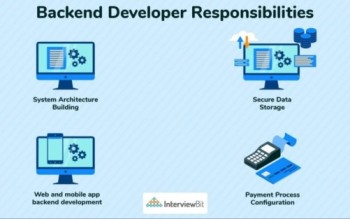Software Development
Introduction
Software development is the process of designing, creating, testing, and maintaining software applications or systems that fulfill specific needs or solve particular problems. It encompasses a wide range of activities and methodologies, from initial concept through to deployment and maintenance. This article explores the software development lifecycle, methodologies, tools, and best practices in software development.
The Software Development Lifecycle (SDLC)
The Software Development Lifecycle (SDLC) is a structured approach to software development that outlines various stages of the development process. Common stages include:
- Planning: This phase involves identifying the purpose of the software, defining its objectives, and establishing project requirements. Stakeholders, including clients and developers, discuss project scope, budget, and timelines.
- Requirements Gathering: During this phase, developers gather detailed requirements from stakeholders to understand what the software needs to accomplish. This often involves interviews, surveys, and documentation of user stories.
- Design: The design phase focuses on creating a blueprint for the software. This includes designing the software architecture, user interface (UI), and user experience (UX). Developers may create wireframes and prototypes during this stage.
- Development: In this phase, developers write the actual code based on the design specifications. This involves using programming languages, frameworks, and tools to build the software.
- Testing: Once the software is developed, it undergoes various testing methods to identify and fix bugs or issues. This can include unit testing, integration testing, system testing, and user acceptance testing (UAT).
- Deployment: After successful testing, the software is deployed to a production environment, where it becomes accessible to users. This may involve installing the software on servers or distributing it to end users.
- Maintenance: Software requires ongoing maintenance to address issues, apply updates, and add new features. This phase ensures that the software continues to meet user needs and functions correctly over time.
Software Development Methodologies
Several methodologies guide the software development process, each with its own principles and practices. Some of the most popular methodologies include:
- Waterfall: This traditional linear approach follows a sequential process where each phase must be completed before moving on to the next. It is best suited for projects with well-defined requirements and minimal changes.
- Agile: Agile methodologies emphasize flexibility and collaboration, allowing teams to respond quickly to changes. Development occurs in iterative cycles called sprints, with continuous feedback from stakeholders.
- Scrum: A subset of Agile, Scrum focuses on delivering small increments of functionality in short timeframes. It involves defined roles (such as Scrum Master and Product Owner) and regular ceremonies (like daily stand-ups and sprint reviews).
- Kanban: Kanban is another Agile methodology that emphasizes visualizing the workflow and limiting work in progress. It uses a Kanban board to track tasks and their status, promoting continuous delivery and efficiency.
- DevOps: This methodology integrates development and operations to enhance collaboration and streamline the software delivery process. It emphasizes automation, continuous integration, and continuous deployment to improve software quality and speed.
Tools Used in Software Development
Software development involves various tools and technologies that facilitate different aspects of the process. Some essential categories of tools include:
- Version Control Systems: Tools like Git and Subversion (SVN) help manage changes to code, allowing multiple developers to collaborate on the same project and track revisions.
- Integrated Development Environments (IDEs): IDEs such as Visual Studio, Eclipse, and IntelliJ IDEA provide developers with comprehensive environments for writing, debugging, and testing code.
- Project Management Tools: Tools like Jira, Trello, and Asana help teams plan, track, and manage project tasks, deadlines, and workflows.
- Testing Frameworks: Testing tools such as Selenium, JUnit, and TestNG enable developers to automate testing processes, ensuring that the software functions correctly.
- Deployment Tools: Tools like Docker, Kubernetes, and Jenkins automate the deployment process, allowing for smoother releases and easier management of software environments.
Best Practices in Software Development
- Code Quality: Maintaining high code quality is essential for the long-term success of a software project. This includes following coding standards, conducting code reviews, and writing clean, understandable code.
- Documentation: Proper documentation helps maintain clarity about the software’s functionality, design, and usage. This is beneficial for both current developers and future teams who may work on the software.
- User-Centric Design: Prioritizing the user experience through UI/UX design helps ensure that the software meets the needs and expectations of its users. User feedback should be integrated throughout the development process.
- Continuous Integration and Continuous Deployment (CI/CD): Implementing CI/CD practices ensures that code changes are tested and deployed frequently, reducing the risk of introducing bugs and allowing for quicker delivery of new features.
- Agile Practices: Embracing Agile practices, such as regular feedback loops and iterative development, promotes adaptability and responsiveness to changing requirements.
- Security Considerations: Integrating security practices throughout the development process helps identify and mitigate potential vulnerabilities early in the software lifecycle.
Conclusion
Software development is a complex but rewarding field that plays a crucial role in shaping the technology we use every day. By following a structured development process, adopting appropriate methodologies, utilizing effective tools, and adhering to best practices, developers can create high-quality software that meets user needs and adapts to changing demands. As technology continues to evolve, staying informed about industry trends and advancements in software development will be essential for success in this dynamic landscape.
Table of Contents
Discover more from
Subscribe to get the latest posts sent to your email.
